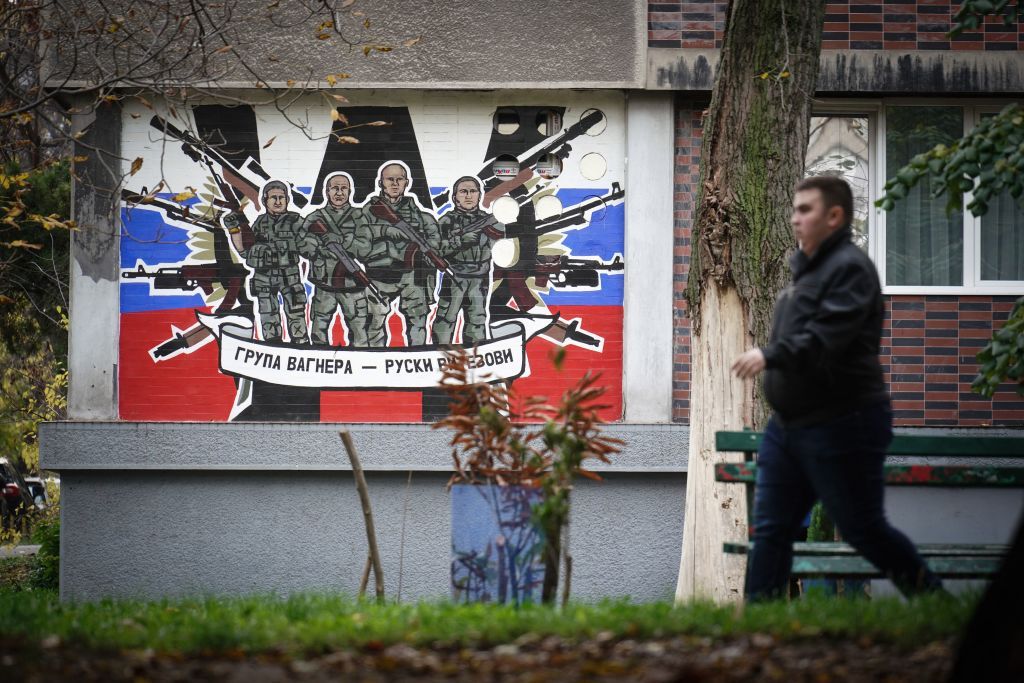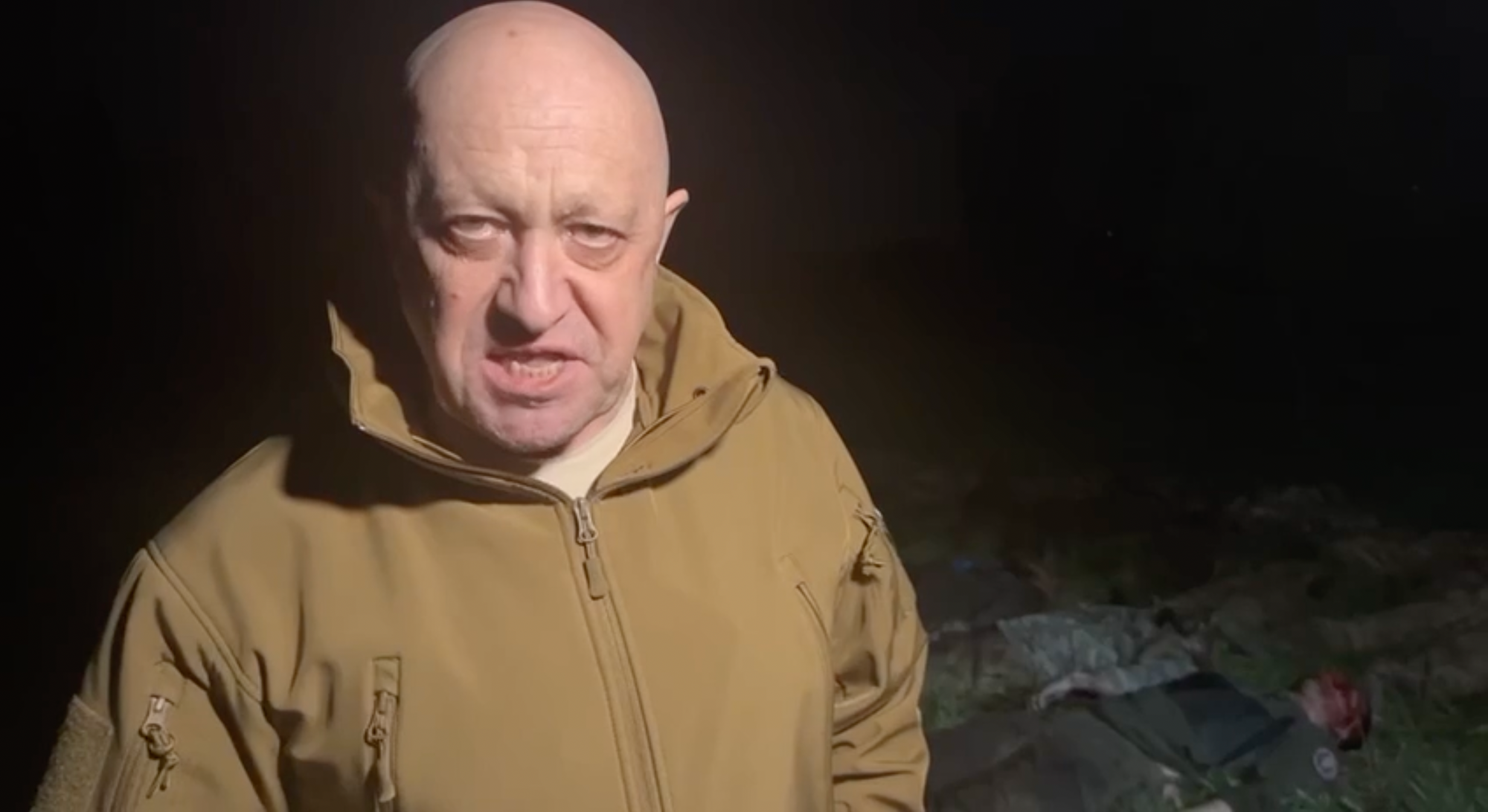Ukraine strikes back around Bakhmut as Wagner reaches last streets in the city

On the evening of May 9, just half a day after a single T-34 tank rolled through Red Square during Moscow’s subdued Victory Day celebrations, something unexpected happened.
Yevgeny Prigozhin, leader of Russia’s Wagner mercenary group, announced that units of the Russian regular army’s 72nd Separate Motorized Rifle Brigade had fled their positions southwest of Bakhmut, the destroyed city in Donetsk Oblast, that has been for nine months the site of the bloodiest battle of Russia’s war against Ukraine.
A few hours later, Ukraine’s Third Assault Brigade confirmed Prigozhin’s claims that the 72nd was in flight, reporting their own capture of Russian positions west of a key canal running adjacent to Bakhmut.
A video published by the brigade on May 13 showed Ukrainian assault infantry, backed by multiple tanks and armored vehicles, surging forward across pockmarked fields, facing little resistance.
The next few days showed that this Ukrainian advance was not an isolated occurrence.
Since then, Ukrainian forces have reportedly made significant advances not only on the southern, but also the northern flank of Bakhmut near the villages of Khromove and Bohdanivka.
Here, according to geolocated footage and Russian Telegram channels, Russian regular military units abandoned their positions in a similar fashion.
According to the latest official information from the Ukrainian military, Ukraine has taken back more than 20 square kilometers around the city, including positions that Russian forces have held since February.
On May 18, the Third Assault Brigade once again reported a successful localized breakthrough on the western outskirts of Bakhmut.
Meanwhile however, the battle inside the city continues to move in favor of Russian forces led by Wagner and Russian paratrooper units.
Twilight of the battle
The neverending battle for Bakhmut can now be understood almost as two separate battles, those on the flanks and that inside the city.
Ukraine’s counterattacks have pushed Russian forces back from the two main “Roads of Life” into Bakhmut, which, in theory, makes Ukraine’s famed “fortress” city easier and safer to reinforce and resupply.
Unfortunately for Ukraine, over five months since Wagner fighters first entered Bakhmut’s urban area, there is barely anything left of the fortress.

As of May 18, Russia controls over 95% of Bakhmut, with the latest open-source maps showing Ukrainian forces holding on only to a handful of streets and apartment buildings on the western outskirts of the city.
In almost daily updates, Prigozhin has begun to measure Wagner’s daily advances in streets and square meters, testifying to the slow progress made by the much-depleted mercenary force.
On May 17, Russian sources claimed that Wagner had taken the entirety of a neighborhood dubbed the “Nest,” where Ukraine had allegedly concentrated a large number of defending units.

The Battle of Bakhmut, by now likely the bloodiest single military engagement of the 21st century, looks to have finally entered its twilight.
As costly as the defense has been, with Ukraine reportedly suffering high casualties, the initially controversial choice of the Ukrainian command to hold the city for as long as possible seems to have paid off.
According to U.S. estimates as of early May, Russia is believed to have suffered at least 100,000 casualties over five months since its assault on Bakhmut gained intensity in late autumn. This rough figure amounts to half of Ukraine’s own estimates of Russia’s total personnel losses since the beginning of the full-scale invasion.
Though the roads into the city were for months under constant fire from Russian forces less than a kilometer away in some areas, Ukraine did manage to keep its defense of the city stable, and the fear of a disastrous encirclement proved unfounded.
In tense urban fighting where almost every street and building was contested, Ukraine successfully carried out a holding operation that will likely be remembered as one of the most decisive engagements of the war.
Wagner’s last victory?
In a battle like that for Bakhmut, for part of the attacking force to continue its relentless urban assault while, just a few kilometers away, other units chaotically flee their positions is an unusual phenomenon.
In this case though, latest developments are likely to be closely connected to the boiling feud between Prigozhin and the Russian Defense Ministry.
While reporting Wagner’s gains inside Bakhmut, Prigozhin consistently goes out of his way in his daily updates to mention Russian retreats on the flanks, which Wagner “handed over” to the ministry back in mid-April.
In competition with the regular army for favor and resources from the Kremlin, Prigozhin has become increasingly desperate to portray the ministry as incompetent and even traitorous.
Prigozhin’s main asset is his fighting force, which has been severely attrited over months of heavy fighting, often in human wave-style front-on attacks.
Things came to a head on May 5, when Prigozhin recorded an expletive-laden video blaming Defense Minister Sergei Shoigu and General Staff Head Valerii Gerasimov for the death of his fighters due to a lack of munitions supply.
In another video message the next day, Prigozhin threatened to pull Wagner forces out of Bakhmut if his demands weren’t met, a threat the mercenary boss later backed down on.

Although Wagner seems to finally be on the cusp of victory in Bakhmut, it now seems likely that it could be the end for the group as a force to be reckoned with in Russia’s war against Ukraine.
Speaking earlier in May to the Kyiv Independent, political scientist and expert on Russian security structures Mark Galeotti said that Wagner in its current state was a “shadow of what it once was.”
No longer able to personally recruit from Russia’s prison systems, Prigozhin has ruined relations with the Defense Ministry, upon which he relies on for ammunition and transport for his troops.
With Wagner having served its purpose in taking Bakhmut and Russian forces now shifting to a more defensive posture across the front line, it looks unlikely that the Kremlin will seek to allocate Prigozhin the resources needed to go further, especially as the Defense Ministry and other elites continue to invest in their own private military companies.
Of all the war crimes committed by Russian forces in Ukraine, Wagner’s brutal, lawless approach to both war and civilian life has earned the group a notorious reputation for cruelty.
The imminent downfall of Wagner is thus good news not only for the Ukrainian war effort, but also for the Ukrainian people.
Has the counteroffensive begun?
When Ukraine first moved forward around Bakhmut, there was chatter among Russian military bloggers that this was the beginning of Ukraine’s much anticipated counteroffensive.
In a tone that bordered on panic, propagandist Yevgeny Poddubny wrote on Telegram on May 11 that Ukrainian forces were making major breakthroughs around Bakhmut, and could soon push so far as to surround the Wagner forces inside the city, in a maneuver much like the Soviet counterattack in Stalingrad.
Similar claims about the Ukrainian counteroffensive already starting were also made by Prigozhin himself, eager to draw more attention to the failures of his political rivals.
Here, the obvious-seeming difference between a counterattack and counteroffensive must be stressed.
Significant as they were, pushing Russian forces back around Bakhmut for the first time in over half a year, the Ukrainian gains are no more than local counterattacks by the brigades already stationed in these sectors, exploiting Russian weakness and poor morale to regain the initiative.

While Ukraine could assign more resources to Bakhmut in an attempt to build on these gains, the large-scale counteroffensive, one which will be undoubtedly spearheaded by fresh brigades and new Western equipment, has yet to begin.
Sound military doctrine dictates that the main push should be accompanied by a second or third offensive elsewhere, to distract Russia’s defense and force Moscow to spread its troops thin, and the Bakhmut area might be part of Kyiv’s plans.
But this part of central Donetsk Oblast, where almost every kilometer has been won and lost with massive effort and casualties on both sides, is very unlikely to present an opportunity for the kind of strategic breakthrough that will enable Ukraine to call the counteroffensive a success.
Nonetheless, the disunity among Russian forces comes at a highly beneficial time for Ukraine in the context of Kyiv’s counteroffensive plans.
Having failed to make any real progress in large-scale offensives over winter in other sectors in Donetsk Oblast including Vuhledar, Lyman, and Avdiivka, the regular Russian military has itself taken heavy losses, and has now proved itself vulnerable to targeted Ukrainian counterattacks.
After a grim winter defined by the war’s most brutal fighting so far, Ukraine’s counterattacks show that the threat of Russia surging onward from Bakhmut towards Sloviansk and Kramatorsk, the key hubs of Ukraine’s defense of Donetsk Oblast, has now subsided.
Russia’s months-long offensive in the region has run out of steam, finally opening the window for Ukraine to take the initiative, at a time and place of its choosing.
Note from the author:
Hi, this is Francis Farrell, cheers for reading this article. I grew up on the other side of the world, but in Ukraine I have found a home unlike any other. Just like with so many of our readers, I understand that you don't have to be from near here to realize how important Ukraine's struggle is for freedom and human rights all over the world. The Kyiv Independent's mission is to lead the way in continuing to bring the best homegrown, English-language coverage of this war, even if the rest of the world's attention starts to fade. Please consider supporting our reporting.













